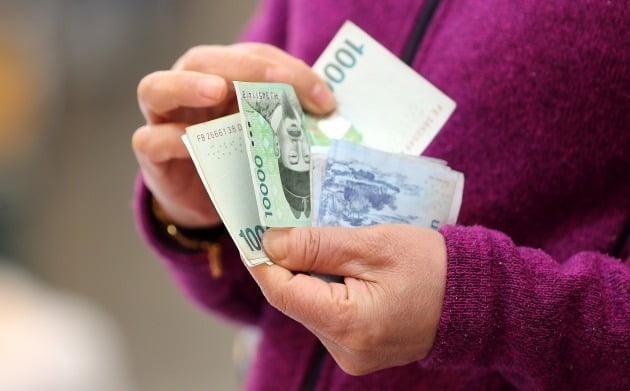
Photo = Getty Image Bank
As the high-intensity housing market regulation continues, real estate mortgage loans in the second financial sector are increasing rapidly. Although banks’ mortgage loan growth has slowed, the demand for loans has not declined, leading to a’balloon effect’. It is pointed out that as the market interest rate is also rising, the household debt burden of the common people who have been trying to find a home is only raising the burden of household debt.
◆Banks are clogged, so go to insurance companies and savings.
According to the Financial Supervisory Service and the Office of the People’s Power, Yoon Chang-hyun on the 11th, the increase in real estate mortgage loans (including housing and non-housing) in the two financial sectors, including insurance companies, mutual finance, and savings banks, from the second half of last year to the beginning of this year is increasing sharply. Last month alone, 1.3 trillion won increased compared to the previous month. The increase has increased following last December (400 billion won) and January this year (900 billion won). In 2019 and February of last year, they decreased by 1.4 trillion won and 900 billion won respectively compared to the previous year. Considering this, the industry says that this year is an unusually high increase.
This is a different shape from the trend of the main talks with the 1st financial sector. The increase in mortgage loans (excluding loans from whole households) for the entire banking sector has declined since the end of last year. In November and December, the increase was 3.900 trillion won and 3.5 trillion won respectively compared to the previous year, but in January, it was only 2.6 trillion won.
It is an analysis that since last year, real estate-related loans in the second financial sector have increased remarkably. According to data submitted by the Financial Supervisory Service in the office of Assemblyman Yoon Chang-hyun, real estate mortgage loans handled by all insurance companies until November last year amounted to 89 trillion won. It exceeded the loan amount (79.800 billion won) for the past year. Until the end of 2018, it reached 7.6 trillion won, but it has increased sharply from last year. Real estate mortgage loans from mutual financing such as credit unions, nonghyups, suhyups, and forestry cooperatives also increased by 10% from 315 trillion won at the end of 2019 to 349 trillion won at the end of last year. During the same period, savings banks’ real estate mortgage loans also jumped from 22.3 trillion won to 25.7 trillion won.
◆ Interest rates go up more… What about the household burden
It is analyzed that this is because end-users of home purchases are heading to the second financial sector by’crying and eating mustard’. This is because it is difficult for banks to raise all the funds for their homes as loan regulations become stronger. The biggest reason is that the upper limit of the mortgage ratio (LTV) applied when borrowing from banks has been lowered. In overheated areas and areas subject to adjustment, loans are only available up to 20-40% of the house price. In addition, the government raised the threshold of credit lending regulations to prevent’spiritual’ (attracting souls)-style loans. Major banks have drastically reduced their credit limit and lowered interest rates.
The growing concern is that if interest rates rise, the burden on households who received loans from the 2nd financial sector could increase. Interest rates in the domestic market are impacting as US Treasury yields rise with anticipation of the development of a corona vaccine and economic recovery. According to data released by the Bank of Korea on the 26th of last month, the interest rate for household loans based on the amount of new treatment by the bank in January was 2.83% per year, up 0.04 percentage points from the previous month. It has risen for 5 consecutive months. In the same month, the interest rate for Judamdae also rose by 0.04% from the previous month to 2.63% per annum. It is the largest increase since November 2019.
According to the industry, if interest rates in the 1st financial sector rise, the interest rates in the 2nd and 3rd financial sectors are likely to rise in a stepwise fashion. An official from a financial sector said, “If you receive a real estate mortgage loan from the 2nd financial sector because there is no loan, the high interest rate will be applied and the interest burden will already be high. If interest rates rise in the future, the risk of household debt may be much greater than now.” said.
Some point out that loan regulations are only increasing the interest burden without suppressing the demand for home purchases. Rep. Yoon Chang-hyun said, “We can’t regulate the minds of consumers who want to make homes for better living conditions.” Regulations need to be relaxed,” he said.
Reporter Jeong So-ram/Park Jong-seo [email protected]
Ⓒ Hankyung.com prohibits unauthorized reproduction and redistribution
